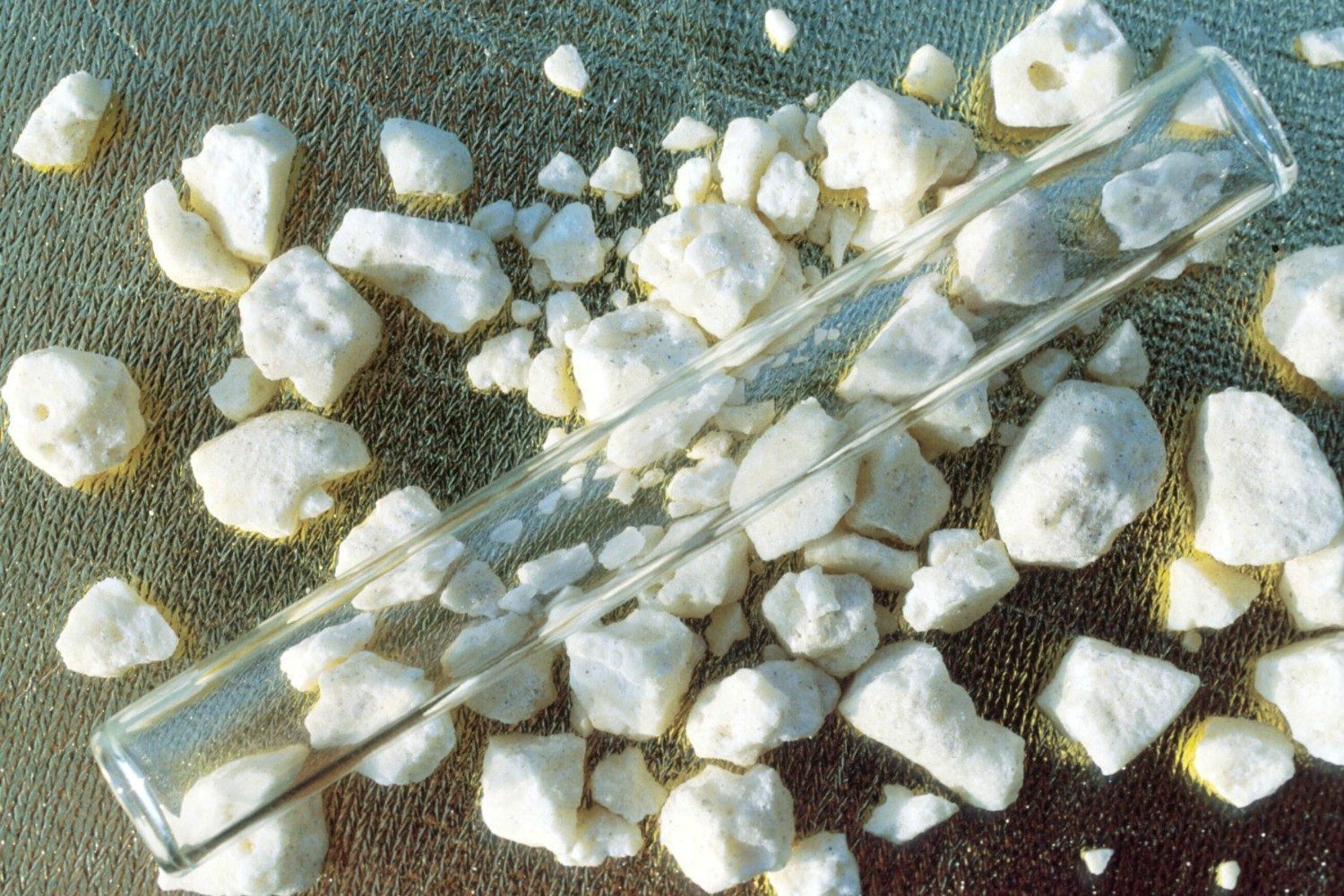What is Crack?
The Difference Between Crack and Cocaine
Crack cocaine is a form of cocaine that can be smoked instead of snorted. Crack is the strongest form of cocaine available and also the most addictive.
Crack is the solid form of cocaine, is also the purest. The powdered cocaine that people snort is the salt form of the drug. Crack on the other hand is combined with other substances most commonly baking soda and water to create a ‘rock’ form. Generally users smoke or dissolve it in an acidic liquid such as lemon juice or liquid vitamin C and inject the drug.
Crack is between 75% to 100% stronger than the powdered version sold on the streets. It creates a more intense high and and a need to get back the high that it is very addictive. Even more than snorting cocaine as a powder.
The name “Crack” comes from the cracking and popping sound that the drug makes when it is heated up and used. It is the more concentrated form of cocaine. Cocaine powder is more expensive and is often referred to as “a rich man’s drug”. Crack has a reputation for being a cheap cocaine recently the US Governement has found that the price for both are about the same.
The reality is that anyone can use crack cocaine, and anyone can buy it. Rich or poor, addiction to this drug can affect anyone. People with crack cocaine addiction will often find themselves begging, borrowing, stealing and committing a crime in order to feed their addiction.
How Dangerous Is Crack?
Deaths related to crack/cocaine in the UK are shockingly high; in fact, they are at an all-time high. This may be because more people are accessing the drug and increased purity levels.
Crack cocaine is an extremely addictive and dangerous recreational drug. Anyone that is, or has suffered from a crack addiction will understand the strong and painful grip that this drug has. One never seems to be enough in any addiction, but with crack, this is especially true.
Producing immediate and powerful euphoric effects, this drug is notorious for the powerful cravings that it induces during come down. Very rarely can people use crack just as a recreational drug. More often than not, casual use quickly turns into a full-blown addiction.
With crack addiction, comes extreme consequences and the annihilation of everything good in the person’s life.
If you are thinking of trying crack for the first time, we hope that this page will deter you from doing so. At the very least we hope to inform you of the facts about crack so you can make an educated decision for yourself.
If you, or someone you know, has a problem with crack and need help, we hopeyou will to pick up the phone and speak to someone.
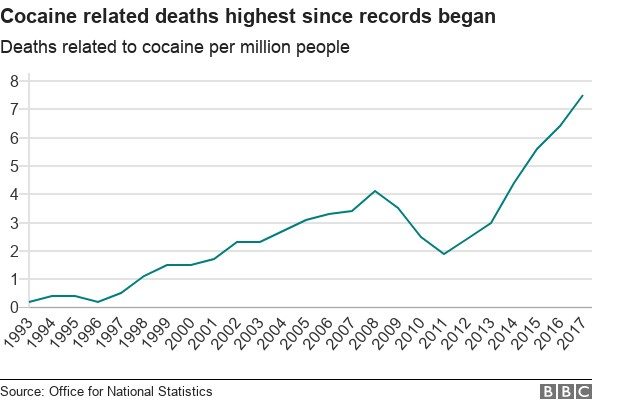
In 2018 there were 637 deaths related to cocaine/crack in England and Wales. This is almost double the number from a few years earlier in 2015 when there were 320 deaths. This is the seventh year that crack/cocaine deaths have continued to rise.
With a rate of 11.1 deaths per million people in 2018, the latest rate is much higher than every other year since the time records first began in 1993.
Crack cocaine and cocaine users often cut with other illicit drugs. This includes the powerful and deadly drug fentanyl. Looking at a lump of crack from the outside, it is impossible to tell what is in it. It is only once you smoke or inject it do you know the full effect. By this time it is often too late to do anything about it.
How Crack Is Made
Crack is made from purified powdered cocaine – which is a hydrochloride salt. To make crack, dealers boil powdered cocaine together with baking soda (or a similar substance) and water.
After they combine cocaine and baking soda, the mixture is boiled to speed up the chemical reaction. Then they remove it cool quickly. The solid settles out at the bottom and they remove and dry it until all of the water has evaporated to produce a solid or base.
Base is the name for the purified form of cocaine, as it is the “base” taken from the drug. The result is a yellowish-white material that looks like pieces of soap or plaster. Users break them into smaller chunks and when these rocks are heated, they make a popping, crackling sound – hence the name, crack
What Does Crack Cocaine Look Like In Pictures?
Crack’s usual appearance comes in different shades of off white, pale pink and yellow. Some dealers will add food colouring to make their “brand” of crack cocaine stand out.
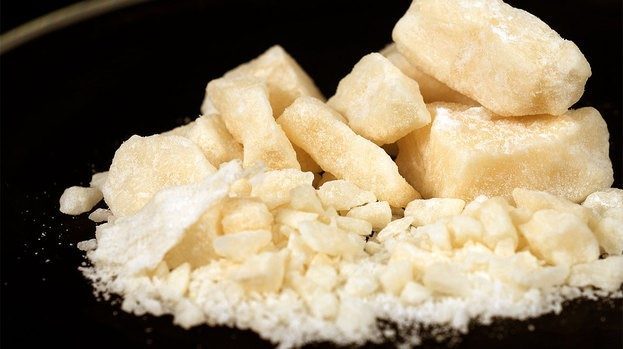
Crack cocaine looks like small stones or rocks. The slang terms and street names for crack cocaine are very much related to its appearance and origin. Crack is about 75 to 90 per cent cocaine. Pure powder cocaine is actually a combination of cocaine and hydrochloric acid. This means users can dissolve it in water. When the hydrochloric acid is removed, the powder is no longer water-soluble and forms the waxy, rock-like material.
Common Street Names For Crack Include:
Crack, Pebble, Rock, Stone, Applejacks, Bad rock, Base, Baseball, Black rock, Boulder, Sugar block
What is Crack Used For?
Crack is most commonly used by placing it on a pipe, heating the part of the pipe where the rock is placed, and inhaling the fumes through the pipe. Household items can also be used or adapted to heat the crack in for inhalation. The name crack comes from the crackling sound that the substance makes when individuals smoke it in a pipe or cigarette.
Users will crumble it into a joint and smok with tobacco.
Crack can also be diluted into a solution and injected intravenously for a shorter, sharper hit.
Common Paraphernalia – How To Know If Someone Is Using Crack Cocaine
If you are concerned that someone you care for may be a crack cocaine user, it can be helpful to know the paraphernalia that is commonly associated with this drug.
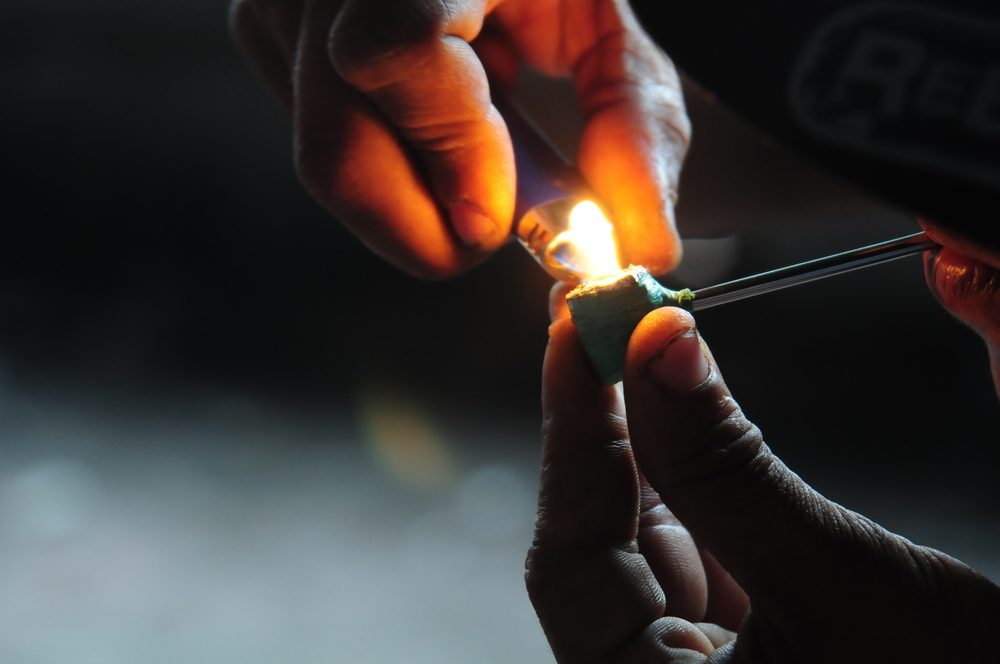
Common Crack Paraphernalia Includes:
Lightbulbs with the inner works removed
People who take crack will use light bulbs to heat crack instead of a glass bong or pipe. The used light bulb will likely have scorch marks on the bottom – this is where it has been heated through the bulb.
Steel wool, steel or copper gauze/mesh, faucet aerators
When smoking crack using a traditional pipe, placing steel wool or copper mesh in the pipe with the crack acts as a filter and helps to secure the drug in place. Faucet aerators are filter screens made by screwing off older faucets. You may find such items lying about if someone is smoking the drug.
Straws, hollowed-out pens and tin foil
Straws and tin foil are used to freebase cocaine, a method for inhaling pure fumes. The crack goes on the tin foil and heated from underneath to release the fumes which are then inhaled through a straw.
Hollowed out pens are also commonly used for straws during freebasing. All items will have a brown/yellow residue or scorch marks on them, indicating drug use.
Aluminium cans
Finding aluminium cans, soda/pop cans with pin-sized holes in the indentation or with a straw device inserted and sealed with tin foil is a common household smoking device.
This particular paraphernalia can be for other drugs like hash and cannabis. Nevertheless, it indicates drug use in some form and so should not be ignored.
Glass pipes, bongs and stems
The preferred smoking implement is a crack pipe. Typically a crack pipe has a long glass stem with a glass ball attached to the bottom. The crack is placed in the ball and heated (using a lighter or similar) The user breathes in the fumes through the stem.
The stem of a used pipe will have a brown residue, and the glass ball will have scorch marks where it has been heated to release the fumes.
Needles, tourniquets, “cooking up” equipment
Crack can be injected. The crack will first of all need to be turned into a liquid solution using “cooking up” equipment, the same equipment used for intravenous heroin use.
Crack and heroin can be injected together at the same time, and this is known as Snowballing. Although this method is less common, it is still used and is extremely dangerous.
Finding any drug injecting equipment is a massive cause for concern as is finding any paraphernalia associated with abuse of the drug. Please do not ignore the signs and speak to the person concerned and urge them to seek immediate professional help.
The Effects Of Crack Cocaine
How does it make you feel?
Effects are relatively short-lived, at least when compared to other class A drugs. The onset of the effects are immediate, but they only last on average for 5 to 15 minutes. After the user will experience a comedown period with intense cravings for more of the drug.
Why is crack so addictive?
The intense cravings that are a side effect often lead to a crack binge. During a binge, the user will smoke the drug, rock after rock in order to stay high for longer. Binging on this drug is extremely harmful, not only to a person’s physical health but to their mental health also.
Crack is a super-strong central nervous stimulant that affects the user’s brain. When it is used, large amounts of dopamine are released in the brain as a result. The person experiences the effects in a much more intense way, but its effects are short-lived.
Crack is thought to be an american drug but more and more people are becoming addicted in the UK. Thankfully addiction services are becoming more aware of the problem and better treatment is available.
%22%20transform%3D%22translate(1.2%201.2)%20scale(2.4375)%22%20fill-opacity%3D%22.5%22%3E%3Cpath%20fill%3D%22%23fff%22%20d%3D%22M145%2036L3-16%20268%200z%22%2F%3E%3Cellipse%20fill%3D%22%23fff%22%20rx%3D%221%22%20ry%3D%221%22%20transform%3D%22rotate(154.5%20-12.6%2055.7)%20scale(17.71392%2040.09936)%22%2F%3E%3Cellipse%20fill%3D%22%23fff%22%20rx%3D%221%22%20ry%3D%221%22%20transform%3D%22rotate(-178.9%2072.2%200)%20scale(83.01615%2024.65478)%22%2F%3E%3Cellipse%20fill%3D%22%23fff%22%20rx%3D%221%22%20ry%3D%221%22%20transform%3D%22rotate(40.3%20-12.8%204.7)%20scale(19.74874%2041.3193)%22%2F%3E%3Cellipse%20fill%3D%22%23dcdcdc%22%20rx%3D%221%22%20ry%3D%221%22%20transform%3D%22matrix(150.99844%2029.78841%20-11.4663%2058.12301%20149.4%2090.6)%22%2F%3E%3Cpath%20fill%3D%22%23fff%22%20d%3D%22M6.4%2084.5l17.8%2048.8-22.6%208.2-17.8-48.8z%22%2F%3E%3Cellipse%20fill%3D%22%23fff%22%20cx%3D%22147%22%20cy%3D%224%22%20rx%3D%2265%22%20ry%3D%2225%22%2F%3E%3Cpath%20fill%3D%22%23fff%22%20d%3D%22M63%200h193v10H63zM40-24.2L6%2034.7l-18-10.5%2034-58.9z%22%2F%3E%3Cellipse%20fill%3D%22%23ddd%22%20cx%3D%22230%22%20cy%3D%2237%22%20rx%3D%2244%22%20ry%3D%2225%22%2F%3E%3Cpath%20fill%3D%22%23dcdcdc%22%20d%3D%22M56-16l-69%2066%2080-25z%22%2F%3E%3Cellipse%20fill%3D%22%23fff%22%20rx%3D%221%22%20ry%3D%221%22%20transform%3D%22matrix(16.5556%20-4.49916%207.15469%2026.32716%204.9%20125.2)%22%2F%3E%3Cpath%20fill%3D%22%23fff%22%20d%3D%22M154.5%2034.3l65.2-23.1L271%206.9%2083-16zm-172.2-27L9.9-14.2%2027.7%208.7.1%2030.2z%22%2F%3E%3Cellipse%20fill%3D%22%23e0e0e0%22%20cx%3D%2252%22%20cy%3D%22111%22%20rx%3D%2230%22%20ry%3D%22112%22%2F%3E%3Cpath%20fill%3D%22%23e0e0e0%22%20d%3D%22M20.9%2027.5l30.4-16.8L176%2038%2024%20151z%22%2F%3E%3Cpath%20fill%3D%22%23fff%22%20d%3D%22M60%201l74%2028%2087-19zm-74%2063l37%2055-16%2032z%22%2F%3E%3Cpath%20fill%3D%22%23dfdfdf%22%20d%3D%22M174%2026h82v27h-82z%22%2F%3E%3Cpath%20fill%3D%22%23e0e0e0%22%20d%3D%22M18%20110l-5-91%2055-35z%22%2F%3E%3C%2Fg%3E%3C%2Fsvg%3E)
- The number of people seeking help for crack addiction in the UK is increasing.
The short term effects of crack cocaine:
- Increased blood pressure and rapid heart rate
- Increased respiratory rate
- Dilated pupils
- Hyper-stimulation
- Intense euphoria
- Decreased appetite
- Loss of inhibitions
- Hypersexual arousal
- Anxiety and paranoia
- Aggressive, paranoid behaviour
- Depression
- Intense drug craving
- Intense craving for more
- Addiction
- Risk of heart attack
- Death – One hit of crack cocaine can cause sudden overdose or death.
The main risk for crack cocaine users comes in its short term use – even a single hit could be your last.
Crack can increase blood pressure, speed up a person’s heart and breathing so much so that they go into cardiac arrest and die. Healthy people as young as teenagers have suffered heart attacks from using crack.
Because of the intense cravings that crack produces, even your first use of this drug could lead you down the deadly and destructive road of addiction.
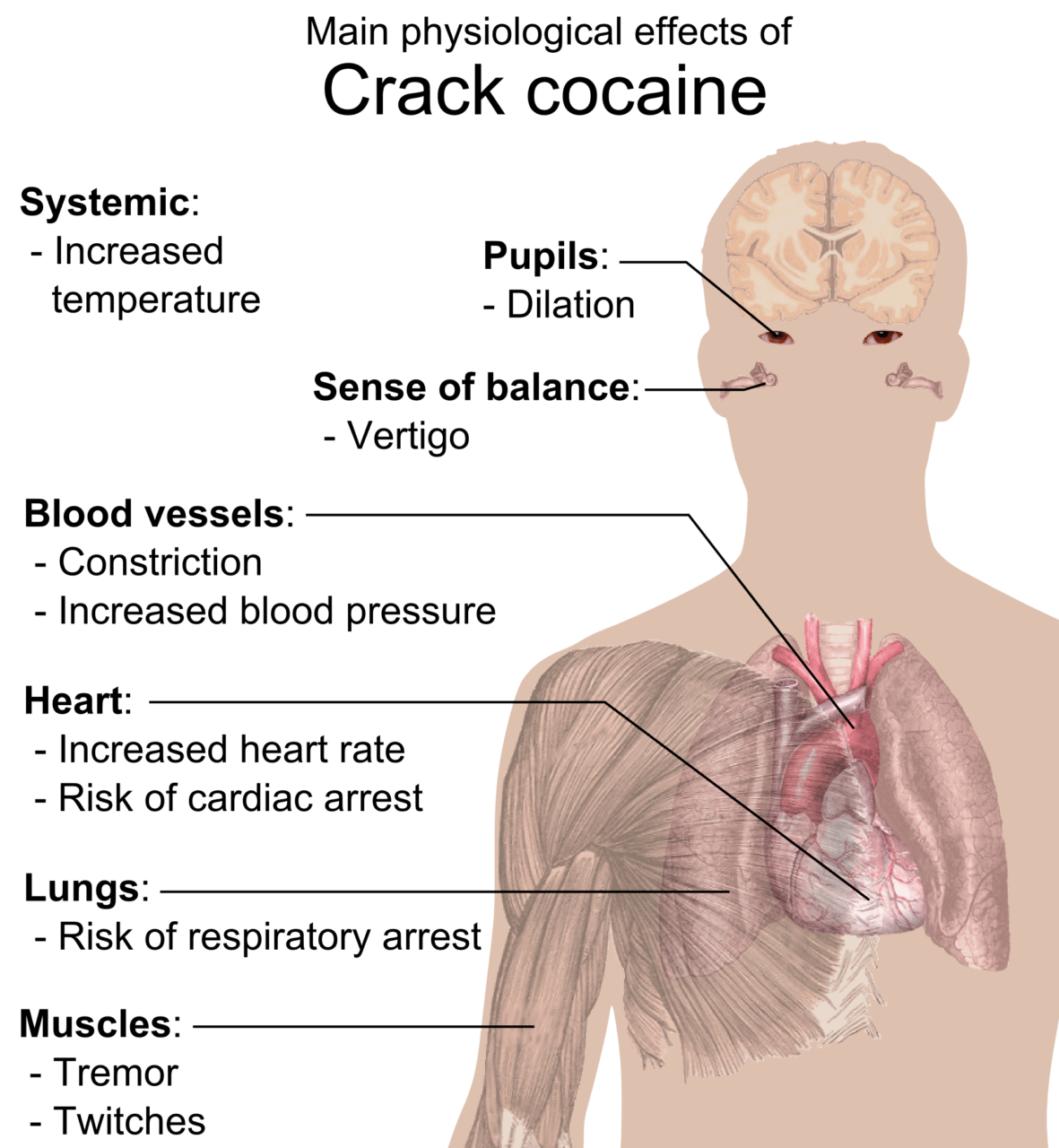
The Long-term Effects and Risks Of Crack Cocaine Use
Long term effects include Sexual dysfunction and infertility (in both men and women), heart attack and heart disease, lung disease, brain seizures, sexually transmitted diseases and infections as a result of unsafe sexual practices and increased risk-taking, tolerance and addiction (can happen in both short term and long term use) and death.
Long term users and those that binge on the drug can often experience a form of psychosis. This is not always temporary or reversible. Regular use can also induce co-occurring illnesses such as anxiety, depression, panic disorder, OCD, personality disorders and schizophrenia.
Lung Damage
Smoking crack or freebase can cause bleeding in the lungs when the small blood vessels burst. Many crack smokers develop a cough and chest pain that worsens with deep breathing. They may cough up phlegm that is black or tinged with blood. Both powder cocaine and crack can also cause the lungs to fill with fluid (pulmonary oedema) from injury to the small vessels lining the air sacs.
Crack Cocaine and Pregnancy
It is difficult to know what effect mothers using drugs has on an unborn child.This is because women who take drugs like crack have poor access to health care, smoke cigarettes and drink alcohol, so it is difficult to decide what cocaine is doing to the health of the baby. However, many cocaine-exposed babies are born prematurely and with low birth weight. These infants tend to be jittery, cranky and overly sensitive to any form of sensory stimulus.
When crack cocaine first became a drug used widely by women the impact on babies was exaggerated. The general idea was that these children must be damaged by their mothers taking crack but that seems to be based mostly on public opinion. More recent studies suggest that problems are more subtle and occur later in life and education.
There are certainly risks to the baby during pregnancy though. Cocaine abuse can cause premature separation of the placenta from the uterus, a condition that can cut off the baby’s blood supply and result in brain damage. Scientists have concluded that more research is needed on the long-term effects of prenatal cocaine exposure.
Crack Cocaine Addiction
Is crack cocaine addictive? As previously mentioned it is extremely addictive and produces intense drug cravings during the comedown period. These cravings often lead to tolerance and addiction. Once addicted, the cycle of addiction can be extremely difficult to break.
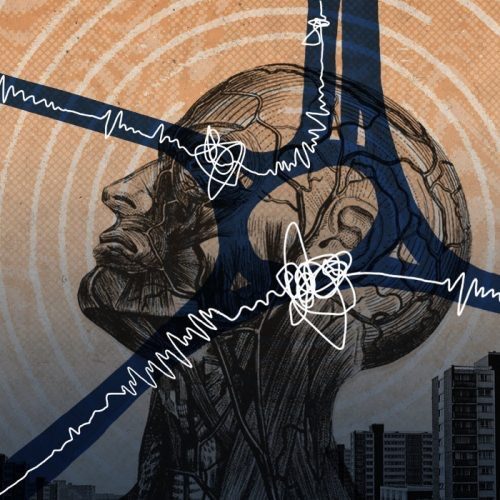
How Does Crack Cocaine Affect The Brain?
Addiction happens when the brain is affected by a drug or activity repeatedly. This changes the way the brain’s pleasure/reward system operates. The brain rewires itself in response to stimulation, creating new pathways. This results in becoming obsessed with getting back to the high. At the same time, crack causes damage to brain cells and tissues. Addiction recovery is possible, but it does take time, and it does take professional guidance and treatment.
Addiction is never straightforward to treat. More often than not, for an individual with an addiction to crack cocaine, residential drug rehab is recommended as the best course of action.
Crack Cocaine and Heroin Addiction
Because the comedown period from crack, can leave a user feeling “wired,” i.e. over-stimulated, edgy, restless and paranoid. A frequent user will often search for a drug to counteract these effects. This can lead to a dual addiction.
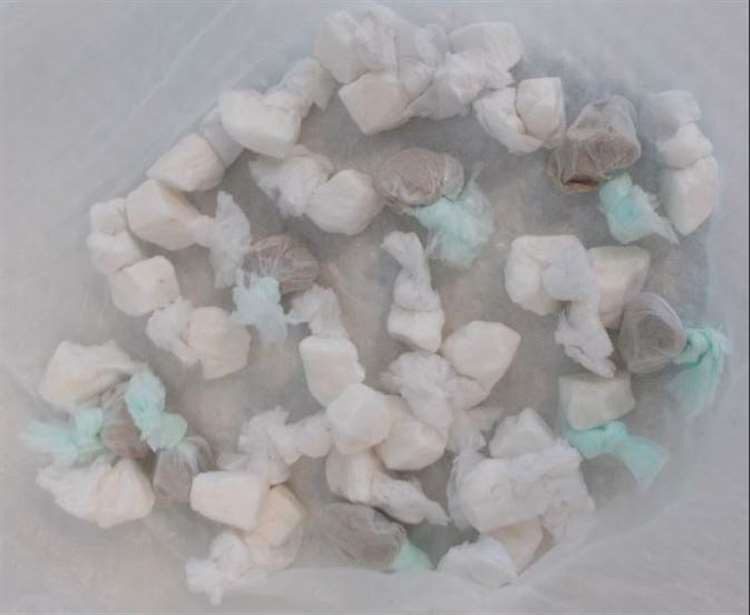
Heroin is renowned for its relaxing properties and is in many ways, the polar opposite to crack in its effects. Crack addicts often become addicted to heroin or other depressant drugs. Those that are dually addicted tend to be more complex to treat and require a full medical drug detox and rehabilitation programme in order to recover from all addictions presenting.
How Long Does Crack Stay In Your System ?
Drug tests cannot tell the difference between crack and powdered cocaine, as essentially they are the same thing. How long crack stays in your system once you have stopped using will depend on a number of things, including:
- Your BMI
- Gender and age
- How much you are using and how long you have been using it for
- Your metabolic rate
- Your hydration levels
- The type of drug test used
As a general guide crack stays:-
- in urine 1 to 4 days
- stays in your blood for up to 24 hours
- stays in your saliva for 24 to 48 hours
- stays in your hair for up to 3 months
With a chronic long term user, trace amounts will be detectable for longer. It takes the body longer to metabolise crack where there is a residue build up in tissues and organs.
How To Stop Smoking Crack
Although it isn’t recognised for creating a physical dependence as such, this particular point is debatable. One of the physical and mental effects of crack cocaine abuse is the overwhelming cravings for more that it produces. This craving can keep an individual in the perpetual self-destructive loop of addiction – even when they want to stop.
If you are using or smoking crack and want to stop, the best approach is to seek and access as much professional support as possible. Having a strong network of supportive addiction professionals and others in recovery can prove invaluable in terms of moral and psychological support.
If you are unable to stop smoking crack despite various attempts and methods to do so, Rehab Guide recommend an inpatient detox.
Within the safety of one of our specialised drug rehabs, you will be provided with a full medical detox and 24/7 support from qualified professionals. You will also undertake one of our bespoke rehabilitation programmes. Our drug rehab programmes are designed to tackle the issues causing your addiction. They will teach you a set of healthy coping mechanisms and skills as well as essential relapse prevention techniques.
With our expert help, you can stop using crack, find recovery and live a productive and drug-free life. Call us to find out more about our CQC registered detox clinics and rehab centres.
Treatment Options For Addiction
The first step in treating any addiction is to achieve abstinence from the substance that is causing you problems. In other words, before therapeutic measures can be of maximum benefit, the crack has to stop! For some, this will mean an inpatient detox, away from the temptation of dealers and drug-using associates.
Once abstinent, evidence-based therapies are recommended to help the individual change their mindset from a drug addict to a person in recovery. If you cannot fund private rehab treatment, then we advise you to contact your local drug and alcohol team, your GP, and access mutual aid groups in your local area.
Crack addiction can be overcome in the community, but you will need to be highly motivated to access as much support as possible. One wrong decision, one moment of temptation, especially in the early days of recovery, can easily take you back to full-blown addiction again.
Detox
Stopping crack cocaine where there is a tolerance often produces withdrawal symptoms. These symptoms can be prevented with the help of medical detox.
Doing a detox within a registered detox facility, you will be provided with approved detox medication to help you cope with the early drug withdrawal symptoms. For many, this can prove to be the difference between successfully stopping and not.
The medication will successfully help to reduce cravings and other withdrawal symptoms, including restlessness, agitation and flu-like aches and pains.
Call Rehab Guide today for immediate admission to a registered detox clinic near you.
Crack Cocaine Rehab
Rehab is an essential part of the recovery process from addiction. A rehab programme will teach you vital coping strategies and tools that will help you to sustain ongoing recovery.
All addiction treatment delivered within our rehabs are evidence-based and delivered by fully qualified professionals including doctors, nurses, specialists, counsellors and therapists. We also ensure that each rehab programme is tailored to your individual treatment needs for those seeking help from crack use and mental health concerns. We know that one size does not fit all when it comes to successfully treating addiction.
For more information on our bespoke treatment programmes and for a free, no-obligation, confidential addiction treatment assessment, call Rehab Guide today on 02072052845. Recovery from crack cocaine IS possible. Let us help you and show you how.
Sources
https://www.ncbi.nlm.nih.gov/pubmed/11043648
https://www.ons.gov.uk/peoplepopulationandcommunity/birthsdeathsandmarriages/deaths/bulletins/
deathsrelatedtodrugpoisoninginenglandandwales/2018registrations
https://www.ncbi.nlm.nih.gov/pmc/articles/PMC3128807/ Cocaine and Metabolites Urinary Excretion

